Our genealogy guide provides detailed information on surviving church records from Northern Ireland, the types of information these records contain and how you can access them.
Church records are among the most useful records when researching your family tree. They document baptisms, marriages, deaths and burials. The majority date from the 1800s onwards, with a small number dating back to as early as the 1600s. Civil registration of all births, deaths and marriages was legally required from 1864 onwards (though non-Catholic marriages were registered from 1845), and so church records are of particular importance for the period prior to civil registration.
>>> YOU MIGHT ALSO LIKE: Irish civil records: what’s online and what’s not online?
A D V E R T I S E M E N T
What do I need to know before I start my search?
When using the church records to learn more about a specific ancestor, try, if possible, to find out the following before beginning your search:
- your ancestor’s name and all possible variants of the name (as well as the maiden names of females);
- your ancestor’s religion or any change in religion;
- the civil parish(/es) in which your ancestor lived;
- the church parish(/es) in which your ancestor lived or the nearest church(/es) to your ancestor’s home.
>

What is a parish?
Towards the end of the early medieval period, Ireland was divided into ecclesiastical units called parishes, each made up of several townlands. These were also used as defined civil (or government) administrative territories after the Reformation. The parish boundaries regularly ignore the boundaries of towns and counties and some boundaries overlap between Northern Ireland and the border counties.
Over time, the boundaries of civil parishes and some ecclesiastical parishes came to differ. Lists and maps of the civil parishes of Northern Ireland can be found on the website of the Public Record Office of Northern Ireland (PRONI). Normally, the churches in each civil parish represent more than one religious denomination.
Sign up to our newsletter
In the past, Church of Ireland (Anglican) parishes tended to correspond with civil parishes and bear the same names. However, the present Church of Ireland parishes do not correspond precisely with those in the past. This is because some new Church of Ireland parishes were carved out of existing parishes in the 18th and 19th centuries, while other parishes were combined to form new parishes.
Before the introduction of the penal laws in the 17th century, the territories of the Roman Catholic parishes corresponded to the civil parishes, but after the laws were eased in the late 18th and early 19th centuries, new parishes were formed to adapt to changes in population centres. Since then, Catholic parishes have continued to be redefined. The names sometimes also changed over time, while confusingly, some Catholic parishes share the same names. Maps of Ireland’s Roman Catholic parishes are available to view on the website of the National Library of Ireland (NLI).
When conducting your research, bear in mind that both civil and church parish names could have several variant spellings.
Protestants who did not align with the Church of Ireland are sometimes referred to as “dissenters” or “non-conformists” in the records. These churches, which include the Presbyterian and Methodist churches, do not have a parish structure. A number of Methodist chapels in a particular area were usually grouped together in what was known as a “circuit”. An index of Irish Methodist churches, chapels and preaching houses can be found on the website of the Methodist Historical Society in Ireland (MHSI).
Before starting your research, bear in mind that whatever the religious persuasion of your ancestor, it may be worth viewing the Church of Ireland parish registers. This is because the Church of Ireland or Anglican Church held the status of the “established” church until 1869, when it was disestablished. The penal laws severely restricted the religious freedoms of other churches. Therefore, the Church of Ireland parish registers frequently record individuals of different denominations (Protestant dissenters and less often, Roman Catholics) before 1870 and often continued to do so for burials after this date.
A D V E R T I S E M E N T
Record collections
It’s important to note that some of Northern Ireland’s historical church records have been lost or destroyed. In addition, no single institution houses all of the region’s surviving church records. Many original church records have been retained within the local community, typically in the churches themselves. PRONI and the NLI have microfilmed and digitized large numbers of historical church records (more on these collections later).
Below is an overview of the principal church records available for Northern Ireland, followed by details of the information each type of record contains. There are a number of websites that offer indexes, transcriptions and images of many of the records described below. They are:
Most of these are subscription sites, so you’ll need an active subscription to view their records. FamilySearch is free to use, though it requires an account, while the Catholic records on FindMyPast are also free to view.
In addition, some local genealogy and heritage centres, museums, libraries and historical societies maintain indexes of local church registers (e.g. Armagh Ancestry and Derry Genealogy Centre). Some of these are available online, while others have been published or can be accessed locally. It’s also worth contacting heritage centres and libraries in the border counties of the Republic, as they sometimes hold indexes for neighbouring counties (e.g. Donegal Ancestry).
A F F I L I A T E A D

PRONI has produced a very detailed and helpful guide that identifies the churches in each civil parish in Northern Ireland, details the records in existence for each parish and church, and provides their dates and locations. The guide is available to download for free from the PRONI website.
John Grenham’s website provides a comprehensive list of all known surviving church records for each parish / church, along with details on where to access them. Simply select the county of your choice below, then the religion, to view the locations of the records available for each parish or church in that county:
Although the site operates on a subscription basis, a limited amount of content can be viewed free of charge each day.
We’ll now look at the surviving records for each religious denomination and where they can be accessed.
Roman Catholic parish registers
The penal laws prevented Roman Catholic clergymen from engaging in regular record keeping, and so Catholic parish registers tend to date to the period after the easing of the restrictions.
The microfilm images of Ireland’s baptismal and marriage registers (as well as a small number of death registers) for over 1,000 Catholic parishes, including the counties of Northern Ireland, can be viewed free of charge on the NLI website.

The start date for a particular parish register in Northern Ireland can vary enormously but generally falls in the early to mid-1800s and the parish records on the NLI website typically conclude around 1880 or slightly later. While this is a very useful resource, these records are not transcribed and so the search process can be tedious if you do not know the precise details of the search you are undertaking (date, names, parish, etc.).
FamilySearch, FindMyPast and Ancestry have all indexed the NLI records, making them searchable by name on their respective sites. The transcriptions can be searched and viewed for free on FamilySearch here and on FindMyPast for free here (for both, you must sign up for a free account first). With Ancestry, however, you must have a paid subscription to view the transcriptions (you can search their records here).
A F F I L I A T E A D

Bear in mind that the NLI does not hold copies of the registers for every Catholic parish in Northern Ireland. For example, it does not have any registers for the parish of Blaris, Co. Antrim, but an index to marriages from 1818 is available at RootsIreland. In fact, the subscription site RootsIreland has the best collection of transcribed church records, which often extend well beyond 1880 – you can view its coverage for each county here.
PRONI has a large collection of microfilm copies of registers for Catholic parishes in Northern Ireland, which can be viewed on-site at Titanic Boulevard in Belfast.
If the records for your ancestor’s parish are not held in any of these collections – or if your ancestor lived post-1880 – it is worth noting that most Catholic parishes hold their original records in local custody. Under these circumstances, we advise making direct contact with the relevant parish.
It’s also important to remember that most Catholic parishes contain more than one church. Sometimes, only one register was kept for the entire parish but at other times, each church had its own registers.
A D V E R T I S E M E N T
Church of Ireland parish registers
Unfortunately, a significant volume of the Church of Ireland registers held in the Public Record Office in Dublin were burnt in 1922 – approximately 500 collections of registers were lost. This included a large portion of registers originating in the six counties of the North, which can make tracing your family tree a very difficult task.
A D V E R T I S E M E N T
Nonetheless, 65 Church of Ireland parishes in Northern Ireland have surviving records going back to at least 1800. These records are housed in a number of different locations. The latest edition of the List of Church of Ireland Parish Registers, published online in July 2025, offers a colour-coded guide to what parish records survive, where they are held and what copies, transcripts and online indexes exist. Crucially, it also includes hyperlinks to online record sets. View the full list here.
Some of the original registers are kept in the Representative Church Body (RCB) Library in Braemor Park, Churchtown, Dublin 14, while others have been retained in the individual parishes. The RCB Library has a small number of parish registers transcribed online. This includes Derryloran (Cookstown) parish church, Counties Tyrone and Derry.
As well as holding microfilm copies of registers, PRONI has digitized records for about 30 Anglican churches in Northern Ireland. These can be viewed on-site but, unfortunately, are not accessible online. They include records for the following churches:
>
- Ballinderry Parish Church, Lisburn, Co. Antrim
- Christ Church, Derriaghy, Lisburn, Co. Antrim
- Christ Church, Lisburn, Co. Antrim
- Craigs Parish Church, Cullybackey, Co. Antrim
- Killagan Parish Church, Cullybackey, Co. Antrim
- Magheragall Parish Church, Lisburn, Co. Antrim
- St Andrew’s Parish Church, Hope Street, Belfast, Co. Antrim
- St Anne’s Cathedral, Belfast, Co. Antrim
- St George’s Parish Church, High Street, Belfast, Co. Antrim
- St James’ Parish Church, Dunaghy, Cullybackey, Co. Antrim
- St Mark’s Parish Church, Ballysillan, Belfast, Co. Antrim
- St Mary Magdalene Parish Church, Donegall Pass, Belfast, Co. Antrim
- St Matthew’s Parish Church, Shankill, Belfast, Co. Antrim
- Drumcree Parish Church, Portadown, Co. Armagh
- Seagoe Parish Church, Co. Armagh
- St Luke’s Parish Church, Mullaglass, Co. Armagh
- St Columb’s Cathedral, Derry, Co. Derry
- St John the Baptist Parish Church, Ballyrashane, Co. Derry
- Annalong Parish Church, Kilhorne, Co. Down
- Dromore Cathedral, Dromore, Co. Down
- Knockbreda Parish Church, Belfast, Co. Down
- St Columba’s Parish Church, Kings Road, Belfast, Co. Down
- St Patrick’s Parish Church, Ballymacarret, Belfast, Co. Down
- Derryvullan North Parish Church, Co. Fermanagh
- Magheracross Parish Church, Ballinamallard, Co. Fermanagh
- Derryloran Parish, Co. Tyrone
- Donagheady Parish Church, Co. Tyrone
- Christ Church, Belfast
- St John the Evangelist Parish Church, Orangefield, Belfast
>
The earliest records in this collection are those from St Columb’s Cathedral, which commence in 1642.

The subscription site RootsIreland has searchable transcripts of Church of Ireland records – you can view its coverage for each county here.
Early Church of Ireland registers were “combined”, meaning that baptisms, marriages and burials appear in the same book. Again, remember that the baptismal and marriage registers for the Church of Ireland often record individuals of different denominations prior to 1870, while some of its burial registers continue to record the burials of people of different religions (and none) up to the present day.
Methodist records
Finding Methodist records can be a little tricky at times due to the complex history of Methodism. Most Methodist baptisms that took place prior to c.1816 are recorded in the Church of Ireland registers or, less frequently, in Quaker or Presbyterian registers.
A split in c.1816 took place over the question of the authority of Methodist ministers to administer sacraments, resulting in two groups: the Wesleyan Methodists and the smaller group calling themselves the “Primitive Wesleyan Methodist Society”. The Primitive Methodists continued receiving sacraments within the Church of Ireland, while the Wesleyan Methodists authorized their ministers to perform baptisms and communions. The majority of Wesleyan Methodist baptismal registers commenced in the 1830s and 1840s; in contrast, the Primitive Methodists did not keep baptismal registers until the 1860s and 1870s, and then only until 1878 when they were reunited with the Wesleyan Methodists. Other breakaway groups, such as the Methodist New Connexion and the Irish Primitive Methodists, united with the Methodist Church in Ireland in the early 20th century.

A Methodist baptismal register typically includes records for the baptisms that took place in all the churches in a particular “circuit”. This can prove confusing as the composition of the circuits changed over time and so the records pertaining to a specific Methodist church may be found in the books belonging to a number of different circuits.
From 1845, marriages in Methodist chapels were legally permitted but only in the presence of a district registrar who retained the marriage record. After the Marriage Law (Ireland) Amendment Act, 1863, Methodist buildings were licenced for marriages. The marriage registers were then kept in the local Methodist chapels or by the Methodist clergymen who ministered throughout their designated circuits and sometimes the registers travelled with them, which unfortunately led to the loss and destruction of some records.
A D V E R T I S E M E N T
Many registers have been retained in the local Methodist churches. The Methodist Church in Ireland, the MHSI and PRONI preserve a large volume of original records and microfilm copies of the records for the Methodist churches in Northern Ireland. PRONI has digitized records for nine Methodist churches. These can be viewed on-site but, unfortunately, are not accessible online. They include records for the following churches:
>
- Carrickfergus Methodist Church, Co. Antrim
- Frederick Street Methodist Church, Belfast, Co. Antrim
- Hyde Park Methodist Church, Parish of Grange, Mallusk, Co. Antrim
- Ligoniel Methodist Church, Belfast, Co. Antrim
- Salem Methodist New Connexion Church, York Street, Belfast, Co. Antrim
- Dungannon Methodist Church, Co. Tyrone
- Primitive Wesleyan Methodist, Moy & Dungannon, Co. Tyrone
- Stewartstown Methodist Church, Co. Tyrone
- Ballymacarrett Methodist Church (later known as Newtownards Road Methodist Church and now East Belfast Mission)
>
A D V E R T I S E M E N T
Transcribed records are available on the subscription site RootsIreland for the following Methodist churches:
- Antrim
- Ballymena, Co. Antrim
- Carrickfergus, Co. Antrim
- Donegall Square East, Co. Antrim
- Larne, Co. Antrim
- Lisburn, Co. Antrim
- Portrush, Co. Antrim
- Armagh
- Ballinacor, Co. Armagh
- Blackwatertown, Co. Armagh
- Cranagill, Co. Armagh
- Lurgan (High Street), Co. Armagh
- Markethill, Co. Armagh
- Portadown (Scotch Street), Co. Armagh
- Richhill, Co. Armagh
- Seagoe, Co. Armagh
- Shankill, Co. Armagh
- Tandragee, Co. Armagh
- Tullyroan, Counties Armagh and Tyrone
- Coleraine, Co. Derry
- Limavady, Co. Derry
- Carlisle Road, Derry
- Derry City Mission
- Maghera, Co. Derry
- Ballyconnell, Co. Fermanagh
>
Presbyterian records
Well into the 18th century, many records pertaining to Presbyterians were recorded in Church of Ireland registers. Under the penal laws, it was illegal until 1782 for Presbyterian ministers to perform marriages. Some of the earliest Presbyterian marriage registers date to the 18th century; however, the start date for most Presbyterian records is in the early 19th century.
Presbyterian records are generally held in local custody or by the Presbyterian Historical Society of Ireland (PHSI) in Belfast. Paid-up members of PHSI have access to numerous useful resources for researching their Presbyterian family tree. Even if you’re not a member, their website is certainly worth a visit to find out about the records that exist and where to access them.

Most of the Presbyterian records for Northern Ireland have been microfilmed by PHSI and PRONI, while the latter has also digitized records for three Presbyterian churches:
- Aghadowey Presbyterian Church, Co. Derry
- Dundonald Presbyterian Church, Co. Down
- 1st Lisburn Presbyterian Church
>
These can be viewed on-site but, unfortunately, are not accessible online. In the case of Dundonald Church, the records go all the way back to 1678; for Lisburn, they go back to 1688 and for Aghadowey to 1702.
There is a very substantial collection of transcribed Presbyterian records on the subscription site RootsIreland. FindMyPast has transcripts and original images of some baptismal records, marriage records and congregational records for the Presbyterian churches at Anaghlone and Ballyroney, both in Co. Down; this site also has burial records for Ballyroney. Remember, you must have an active subscription to view these records.
A F F I L I A T E A D

A very extensive list of names of families survives for 1st Garvagh Presbyterian Church, Co. Derry, dating from 1796, in the form of visitation returns, which can be viewed for free online here. A transcribed list of seat holders in the 1st Castlederg Presbyterian Church in 1878/79 can be viewed for free online here.
Non-Subscribing Presbyterian Church (Unitarians) and Reformed Presbyterian Church (Covenanters) records:
A feature of Presbyterianism is the many internal “splits” and sects. This has implications for finding records. For example, the earliest records for the Non-Subscribing Presbyterian Church (or Unitarians) are, in fact, Presbyterian records. The earliest records for the Reformed Presbyterian Church (or Covenanters) begin mainly in the mid-19th century. Some originals and copies of the records for both the Non-Subscribing and Reformed churches are kept by PRONI.
PRONI has digitized records for four Non-Subscribing Presbyterian churches in Northern Ireland:
- Banbridge 1st Presbyterian (Non-Subscribing) Church
- Downpatrick Non-Subscribing Presbyterian Church, Co. Down
- Rosemary Street Non-Subscribing Presbyterian Church, Belfast
- Templepatrick Non-Subscribing Presbyterian Church
A D V E R T I S E M E N T
PRONI has digitized records for Ballymoney Reformed Presbyterian Church in Co. Antrim, and it has also digitized Reformed Presbyterian Church presbytery records containing a transcribed copy of minutes of the presbyteries of Antrim, Down and Bangor. As usual, all of these digitized records can be viewed on-site but are not accessible online.
Records for other dissenting religions
Moravian Church records:
The Moravian Church placed a strong emphasis on record keeping. PRONI has digitized baptism, marriage and burial records for nine Moravian churches in Northern Ireland. The records commence in the mid-18th century. These can be viewed on-site but, unfortunately, are not accessible online. They include records for the following churches:
>
- Ballinderry Moravian Church, Co Antrim
- Cliftonville Moravian Church (formerly Perth Street), Belfast, Co. Antrim
- Gracehill Moravian Church, Ballymena, Co. Antrim
- University Road Moravian Church, Belfast, Co. Antrim
- Drumargan Moravian Church, Co. Armagh
- Gracefield Moravian Church, Co. Derry
- Lisnamara (Lisnamorrow) Moravian Church, Co. Derry
- Kilkeel Moravian Church, Co. Down
- Kilwarlin Moravian Church, Co. Down
>
>>> YOU MIGHT ALSO LIKE: Moravian village of Gracehill in Antrim gains UNESCO World Heritage Status
>

Congregational Church records:
Baptism and marriage records for Congregationalists in Northern Ireland date to post-1814, although most date from the 1880s. Most Congregational church records are kept in local custody; for example, the records for the churches at Albert Bridge Road (Belfast), Ballymena, Cliftonpark, Spamount and Whiteabbey, all in Co. Antrim, Coleraine, Co. Derry and Donaghy, Co. Tyrone.
PRONI holds originals/copies of records of Congregational churches at Belfast, Carrickfergus, Richhill, Straid and Coleraine and has digitized baptism and marriage records for Albert Bridge Congregational Church, dating from 1867, which can be viewed on-site but are not accessible online.
Transcribed records are available on the subscription site RootsIreland for the Congregational churches in Richhill, Co. Armagh and Coleraine and the Independent Congregational, both in Derry.
Baptist Church records:
Baptist records are often kept in local custody. The earliest Baptist church in Northern Ireland was founded in Coleraine, Co. Derry, in 1795. PRONI holds a microfilm copy of the church’s membership book, as well as original records for seven Baptist churches in Northern Ireland:
- Tandragee, Co. Armagh
- Tobermore (Tubbermore), Co. Derry
- Clough, Co. Down
- Conlig, Co. Down
- Holywood, Co. Down
- Killyleagh, Co. Down
- Dungannon, Co. Tyrone
>
Transcribed records are available on the subscription site RootsIreland for Baptist churches in:
- Ballymena, Co. Antrim
- Carrickfergus, Co. Antrim
- Great Victoria Street, Belfast, Co. Antrim
- Tanderagee and Fivemilehill, Co. Armagh
- Carndaisy and Tobermore, Co. Derry
- Coleraine, Co. Derry
- Fountain Street, Derry
>
Religious Society of Friends (Quakers) records:
The Religious Society of Friends (or “Quakers”) placed a strong emphasis on record keeping and kept comprehensive registers of births (since baptisms were not performed), marriages and burials. These are typically continuous from the late 17th century. Most of the records for Northern Ireland are held in the Ulster Quarterly Meeting House in Lisburn, Co. Antrim, while PRONI keeps microfilm copies of the records from Lisburn, as well as from Lurgan, Ballyhagen and Richhill. There are also some Quaker records held in the NLI in Dublin.

Transcribed Quaker records are available for Lurgan and Richhill and Grange, Co. Armagh, on the subscription site RootsIreland.
FindMyPast has birth, marriage, death, burial and congregational records for the Society of Friends in Ireland, often dating back to the mid-1600s. Their substantial collection consists of both transcripts and scanned colour images of the originals. Remember, you must have an active subscription to view these records.
A F F I L I A T E A D

What do the records tell us?
There is a great degree of variation in the level of detail (the “content”) contained within church records and there can be considerable variation even within a single parish or church. The religious denominations and the individual parishes/churches differed greatly in administrative efficiency and in the degree to which the record-keeping rules were imposed.
The earlier records are usually in “blank” unlined books for which the recorder could decide which information to document. As time went on, “pro forma” registers with many columns of defined information became more common, which encouraged more consistent record keeping. From the 1820s/30s, pro-forma or ruled-up registers become common in the Church of Ireland, but they only become common in the 1880s or 1890s in the Catholic Church. It should also be noted that the Catholic parish registers sometimes record details in Latin (including first names but not surnames or placenames).
A D V E R T I S E M E N T
Baptismal registers
The most comprehensive entries in a baptismal register would include the following information:
>
- name of child;
- date of baptism;
- date of birth (uncommon in Catholic records);
- name of father;
- maiden name of mother (uncommon in Church of Ireland records but common in Catholic records);
- townland / street where the parents lived;
- occupation of father (rarely provided);
- names of sponsors (uncommon in Church of Ireland records);
- name of minister / priest.
>
Catholic baptism records are among the most detailed. While the date of birth is rarely provided, most babies would have been baptized into the Roman Catholic Church within a couple of days of their birth.
Sign up to our newsletter
Marriage registers
The most comprehensive entries in a marriage register would include the following information:
>
- date of marriage;
- names of bride and groom;
- ages of bride and groom;
- townland / street / parish where each party resided;
- occupation of groom;
- names of the parents of each party and if “dead” (rarely provided in early registers);
- occupations of each father;
- addresses of parents;
- names of witnesses;
- addresses of witnesses;
- whether married by licence or banns.
>
From 1845, church marriage registers for all Protestant (and mixed) marriages contain the same information as the civil registers; this did not apply to Catholic marriages until 1864. Quite regularly, the age is not stated; instead, the record states “full age” or “age of majority”, meaning over 21 years of age or “minor”, meaning under 21. Interestingly, both Methodist and Quaker marriage records list all the guests present at the ceremony as witnesses.
>>> YOU MIGHT ALSO LIKE: Understanding marriage settlements for Irish family history research
Death and funeral registers
Death and funeral records were rarely kept (and even more rarely survive) but when they were, the entries generally only include the following information:
>
- name of deceased;
- address of deceased (sometimes provided);
- date of death.
>

Burial registers
The most comprehensive entries in a burial register would include the following information:
>
- name of deceased;
- gender;
- address (less frequently provided);
- age / date of birth (less frequently provided);
- date of burial / date of death;
- location of burial (sometimes the cemetery, grave section and number).
>
Some burial registers were actually kept to record payments made at the funerals of the deceased. There are relatively few historical Methodist, Presbyterian, Baptist or even Catholic burial registers, especially prior to 1870. This was because their churches were, quite often, in built-up areas and did not have a cemetery attached. Instead, members of these churches were sometimes interred, side-by-side with their Anglican neighbours, in the burial grounds attached to churches under the control of the Church of Ireland; these church sites often dated to the medieval period and so people of many different religious persuasions felt an ancestral attachment to these burial spaces. Therefore, individuals of various religions were recorded in burial registers kept by Anglican clergymen, albeit sporadically.
A D V E R T I S E M E N T
To supplement these records, we suggest you search the many gravestone inscription databases available online (but remember, your ancestor could have been buried in an unmarked grave). The Ulster Historical Foundation provides a useful graveyard index and gravestone inscription index on its website.
The Mems Dead website features a sizeable sample of transcribed gravestone memorials that were recorded in the Journal of the Association for the Preservation of the Memorials of the Dead in Ireland; while a large portion of the sample relates to Co. Derry, you will also find records from elsewhere in Northern Ireland also transcribed.
>>> RELATED: Tracing your roots online using old records of Irish gravestone memorials and “Mems Dead”
Other church records
Depending on the religion, the archival collection for a particular church/parish can also include:
>
- Church of Ireland vestry minute books;
- minute books for Presbyterian and Baptist churches and Quaker meeting houses;
- clergymen registers;
- Methodist, Baptist and Moravian membership registers;
- parish/congregation censuses;
- communicants’ registers;
- confirmation registers;
- Sunday school records;
- Methodist circuit schedule books;
- seat lists or pew rent books;
- account books (recording the names of those who gave money to the church, who were paid for their services or who received financial assistance).
>
Finally…
Finally, if you’re still finding the church records difficult to navigate, you may wish to turn your attention to the newspaper archives. Newspapers were particularly good for announcing the life events of wealthy or well-known Protestants. Both the Irish Newspaper Archives and the British Newspaper Archive are free to search (there is a fee to view).
A F F I L I A T E A D

* Originally published in August 2021; updated in October 2025.
Advertising Disclaimer: Irish Heritage News is an affiliate of FindMyPast and the British Newspaper Archive – we earn commissions from qualifying purchases. This does not affect the amount you pay for your purchase.
READ NOW
➤ Discover your roots in Co. Monaghan with over 15,000 newly added records on RootsIreland
➤ Did your ancestor spend time in a workhouse?
➤ Find your ancestors in Ireland’s historical school records
➤ A genealogist’s guide to DNA testing for Irish family history research
➤ Tracing John F. Kennedy’s Irish ancestry through Wexford, Limerick, Cork and Fermanagh
A D V E R T I S E M E N T







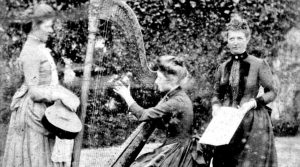

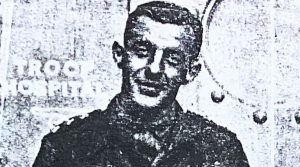

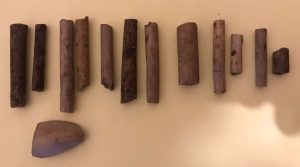
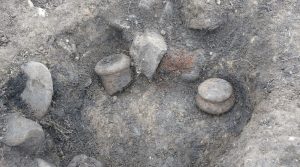
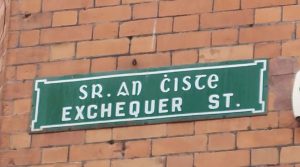

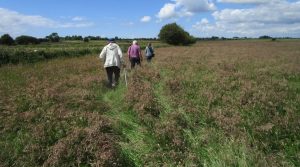
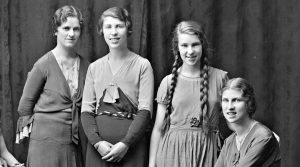
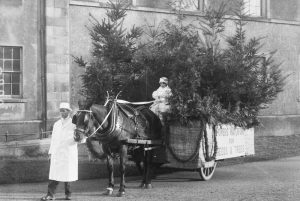


One Response
yes a great help thank you ps just looking for A grave 1896 omagh co tyrone Robert CHISM born 1889 7 years old